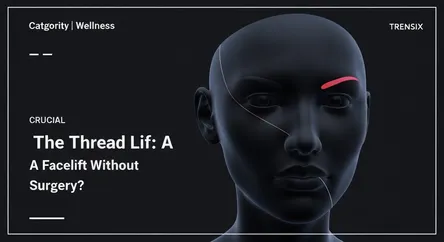Wellness
The Thread Lift: A Facelift Without Surgery?

Discover the thread lift, a popular minimally invasive procedure that lifts and tightens sagging skin without the need for major surgery.
What is it?
A thread lift is a minimally invasive cosmetic procedure designed to lift and tighten sagging skin on the face, neck, or jowls. Often called a "lunchtime facelift," it involves inserting medical-grade, dissolvable threads or sutures under the skin. These threads are then gently pulled to lift and reposition the skin, creating a more youthful and sculpted appearance. Beyond the immediate mechanical lift, the threads trigger the body's natural healing response, stimulating the production of collagen—a protein that gives skin its firmness and elasticity. This results in continued improvements to skin texture and firmness over time.
Why is it trending?
The thread lift's popularity stems from a growing demand for cosmetic procedures that offer noticeable results with minimal downtime. Unlike a traditional surgical facelift, it doesn't require general anesthesia or lengthy recovery, allowing many people to return to their daily activities quickly. This convenience is a major driver of its appeal. The trend is also fueled by advancements in the materials used, making the procedure safer and more effective than earlier versions. As people increasingly seek subtle, natural-looking enhancements rather than dramatic changes, the gentle lift provided by this procedure has become a popular choice.
How does it affect people?
People who undergo a thread lift typically experience an immediate, subtle lift in the treated areas. Over the following weeks and months, the skin's texture and firmness can continue to improve as new collagen is produced. The results are temporary, generally lasting from one to three years. The most common side effects are mild and temporary, including bruising, swelling, and soreness at the insertion points. However, there are risks, such as infection, the threads becoming visible under the skin, or thread migration, where the sutures shift from their original position, which may create an uneven appearance.